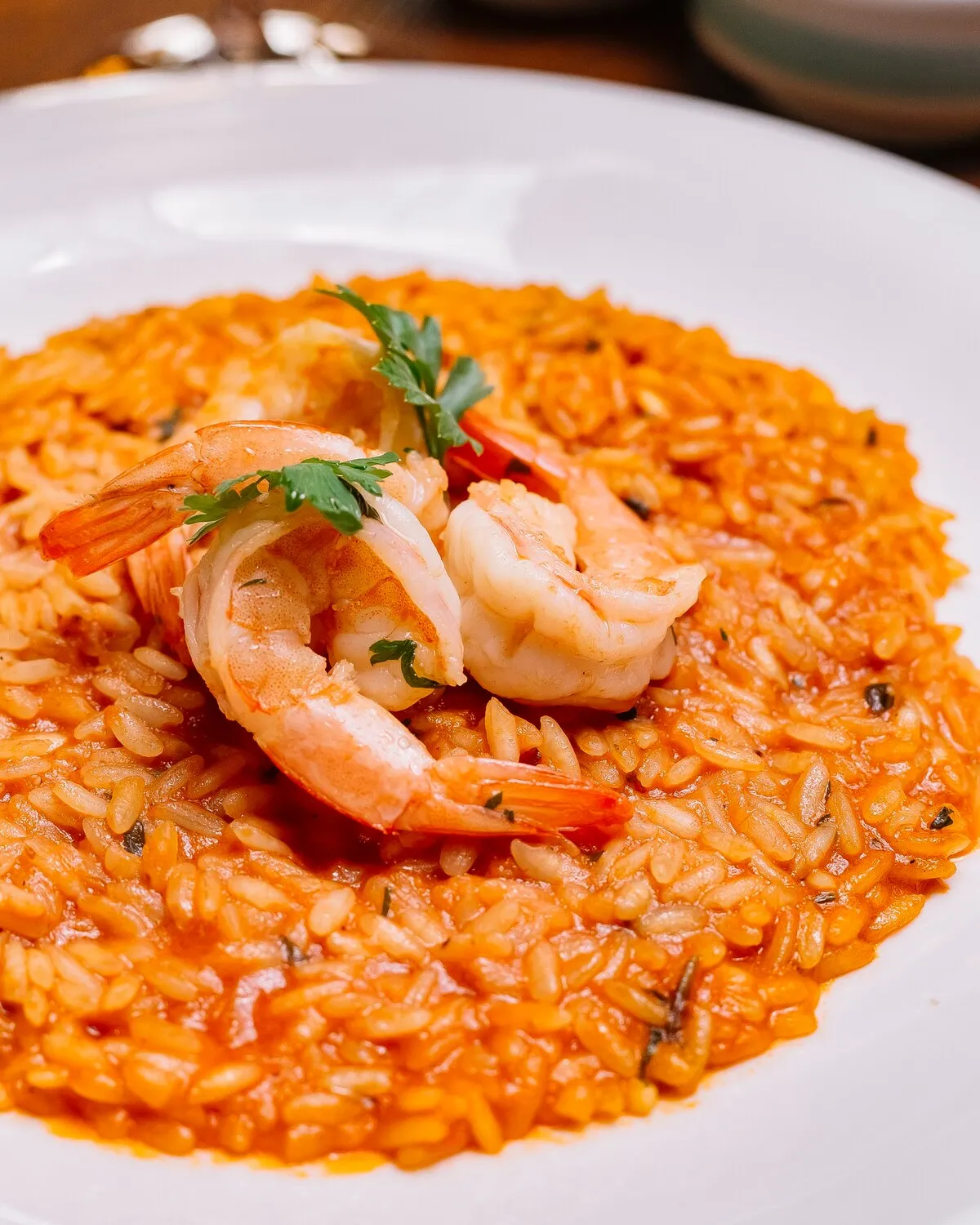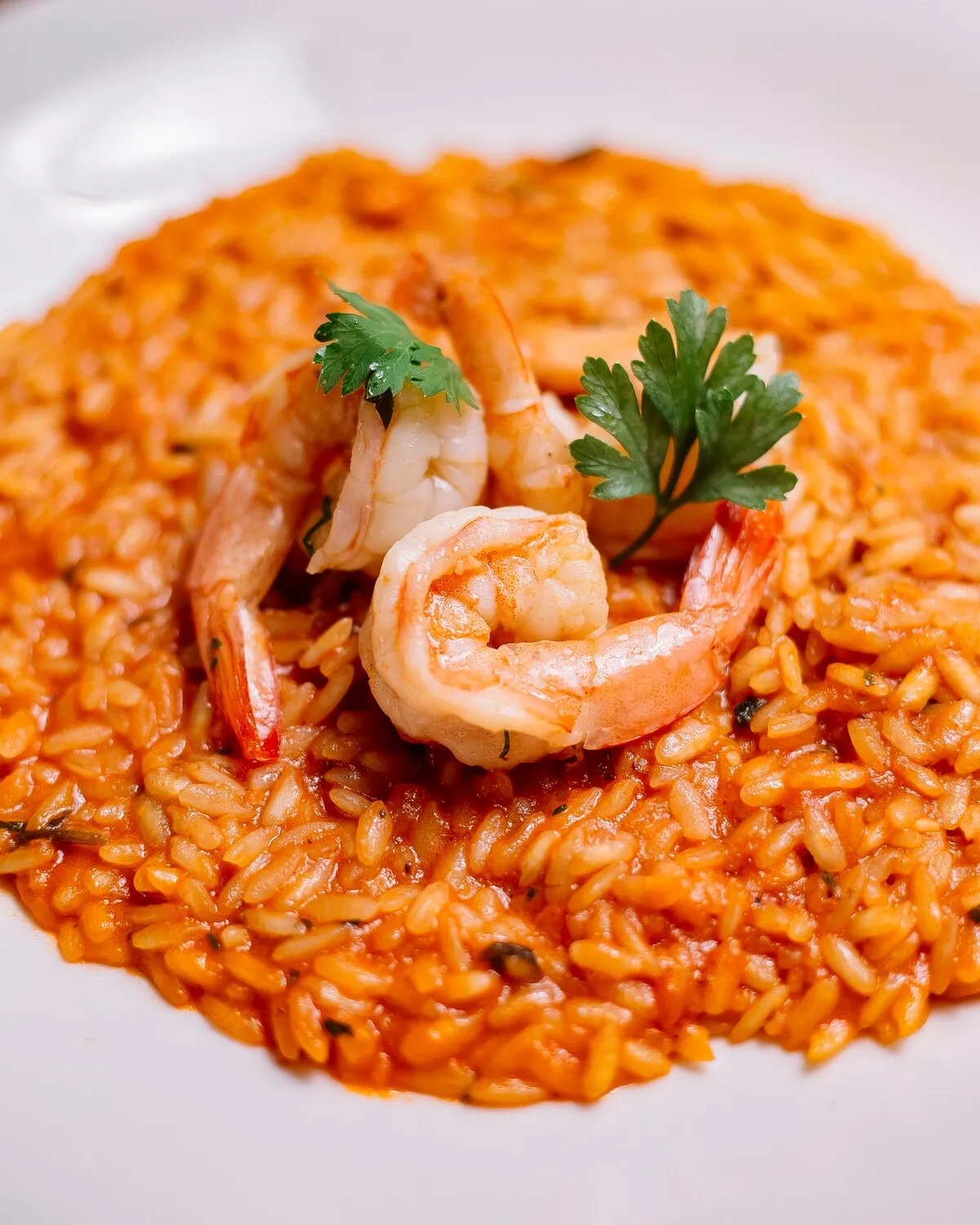
Risoto de Camarão
Creamy shrimp risotto, a popular choice among customers.
Nutrition Facts
* The % Daily Value (DV) tells you how much a nutrient in a serving of food contributes to a daily diet. 2,000 calories a day is used for general nutrition advice.
Manacá Gastronomia
Risotto, originating in Northern Italy, likely began as a way to utilize the region's abundance of rice cultivation. The addition of seafood, such as shrimp, reflects the Italian coastline's influence and access to fresh ingredients. Over time, risotto evolved from a simple peasant dish to a sophisticated and widely enjoyed meal.
Risotto, including Risoto de Camarão, is considered a celebratory and comforting dish in Italian culture, often enjoyed during special occasions or family gatherings.
Regional Variations
While risotto is popular throughout Italy, the specific ingredients and preparations vary by region. Risoto de Camarão is more commonly found in coastal areas with access to fresh seafood.
Slow Food Movement
Risotto aligns with the Slow Food movement's emphasis on quality ingredients and slow, deliberate cooking methods. The patient process of stirring the rice and gradually adding broth is integral to achieving the perfect creamy texture.
Social Dining
Sharing a pot of freshly made risotto is often a communal experience, encouraging conversation and connection around the table.
Risoto de Camarão offers a delightful balance of creamy richness, savory seafood, and delicate sweetness.
The dish features tender shrimp, often sautéed with garlic and herbs, blended into a creamy Arborio rice base. The rice is cooked slowly with broth, typically fish or vegetable, until it releases its starch and achieves a characteristic creamy texture. White wine is often added for acidity and depth of flavor, while Parmesan cheese provides a salty, umami richness. Herbs like parsley and chives add a fresh, aromatic note.
Rice Selection
Arborio rice is the most commonly used variety for risotto due to its high starch content. Carnaroli rice is another excellent choice, offering a slightly firmer texture and even creamier result.
Broth Temperature
Keep the broth hot throughout the cooking process. Adding cold broth will lower the temperature of the rice and hinder the starch release.
Shrimp Quality
Use fresh, high-quality shrimp for the best flavor. Overcooked shrimp can become rubbery, so be careful not to overcook them when sautéing.
Constant Stirring
Stir the risotto frequently, but not constantly, to encourage starch release and prevent sticking. The constant stirring is key to a good result.
Explore additional Risotto dishes and restaurants
Explore RisottoDiscover top dining spots and culinary experiences in São Bento do Sul.
Explore São Bento do SulLearn more about the food culture, restaurant scene, and culinary heritage of Brazil.
Explore Brazil
